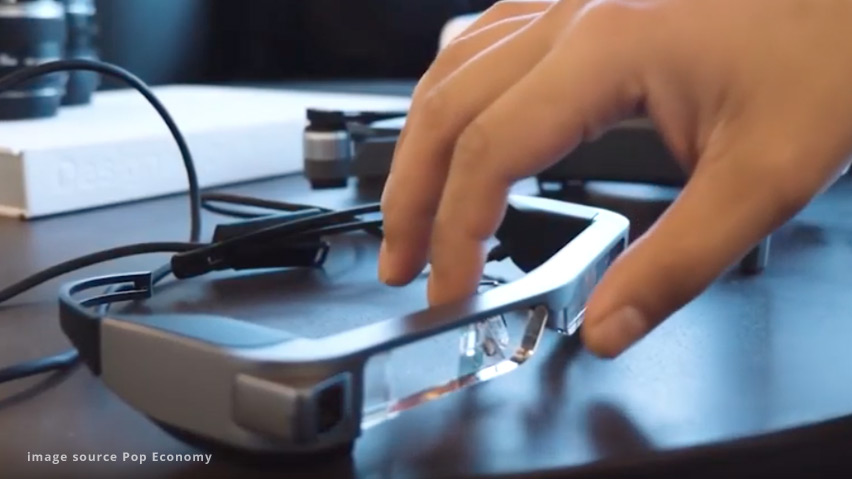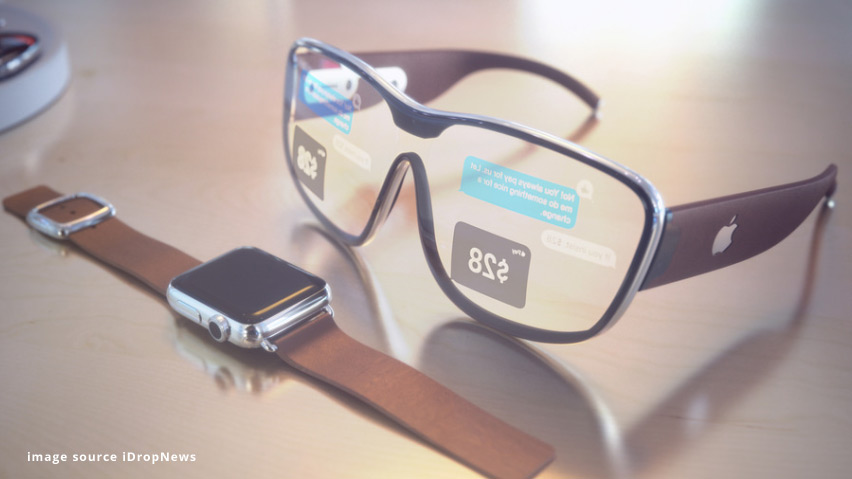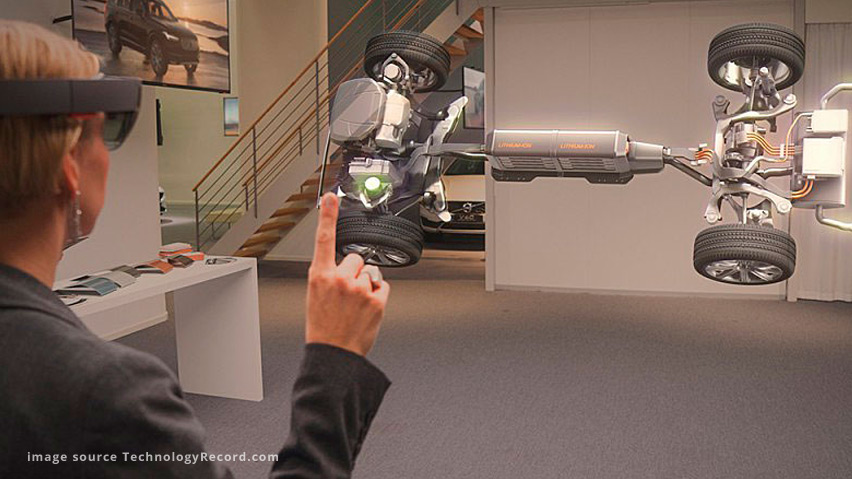Augmented Reality (AR) The Next Wave.
Is AR (Augmented Reality) the next big shift in computing technology? If you would listen to a lot of trendwatchers out there it would be a big Yes, real world overlays are the future.
Commercial support for AR is strong, big technological firms like Microsoft, Amazon, Apple, Facebook and Google are making fast progress its development. The installed applications for AR-supporting mobile devices reached 1.5 billion in 2019. Studies say 30% of smartphone users use AR apps once a week already.
Imagine walking down the road with special glasses on that look like normal sunglasses, but what you see through these glasses is a layer on top of reality. Is shows you a lot of essential information supported by sound. The overlay information will warn you about a speeding car approaching or a hole in the pathway. This device will scan your world and provide you with realtime feedback without having to hold a device. The glasses have speakers, microphones and cameras build-in so you can easily record what you see and you can give it instructions by hand- and eye movement or voice. Inside the glasses you can navigate through applications by focussing on buttons. It would be like wearing an iPhone and using it without touching a display. When you come home lights will turn on automatically and your virtual pet will greet you. Entertainment zombies will beat on your windows and crawl through your room as you hide in a closet, it will feel as if you are in the movie. Endless uses of AR are possible.

These developments are not new. Smartphones applications already use AR-like functionalities by layering 3d objects or graphics over images that are captured in real time. We have already seen the popularity of the Pokemon Go app displaying 3d figures everywhere. Millions of people have funny facebook images with their loved ones dressed up like fairies. In interactive video games these kind of interfaces are now common. In the movies we have 3d experiences where we have to dodge arrows. Who remembers the first Terminator scanning his surroundings recognizing faces and receiving warnings? AR is already here!
There are still many advancements to be made before our world can merge with a virtual reality world. When it comes to reaction times, sharpness, lightning and environment mapping improvements are needed. Apple is working on glasses that for now will work in combination with your iPhone. It would be a small step to integrate Virtual Reality (VR) in such glasses, so actually these two developments would merge into one.
Marketing and AR

Psychologists report that experiences we have with AR and VR have more profound effects on our brains, because they are almost experienced as real. The projections become part of our real world so they are perceived and mesmerized as such. AR can dramatically change how we play, work and learn. Teachers can take their pupils on a journey through the Sahara in the classroom. A mechanic can get advice from a more experienced remote colleague while working on a system in real time. A doctor can look at a patient and see the steel plates and screws placed in a patient in real time. When driving your car you are helped with directions and warnings by this extra layer over what you see. The applications are limitless.
So how can companies make use of these new developments?
From a marketing perspective AR can open up new ways of thinking when it comes to client engagement. A tourist can now walk through the streets of Tokyo and see all the billboards in their native language. Menu’s in restaurants and signs can be instantly translated. You can virtually unfold a business card that has a scan-code for a virtual tour around a product or service. Your folder is now 3D, interactive and animated. Objects, events or environments are easily scanned, analyzed and memorized at any moment.
Ikea already has an app that lets you project furniture in your living room so you can see how it looks. For realtor and architects presentations now become more realistic as their clients can walk through spaces and see the building projected in the street on location wearing these glasses. You can experience how your new sign will look on your office building by walking around your office and see it from different perspectives and even from different light conditions. Shops can show how clothes or shoes look on you when you pass a display. Supermarkets can promote products by having them stand out and displaying a video about it.
The use of AR for brand engagement is not yet common practice for most businesses. As studies have shown that VR and AR are experienced as more real life experiences by our brains this is a development that is of interest for marketeers. All marketeers know that at a deeper emotional response to a product of service can help with brand loyalty.
Conclusion

A mixed reality is the future. Blending our real world with digital images, holograms and projections will improve our lives. We have moved from desktops to smartphones to glasses. Is the next step to move from glasses to contact-lenses or even direct neurological influencing? With AR we will have all the information we need available as you move along in life, connected and visualized. Every moment can be called back and analyzed.
The limits are not easily defined. One thing is for sure .. extensive scrolling on small displays will become a thing of the past. When our children tell their children about a smartphone it will be like me telling my son about the dial phone or video recorder. Will the time spend sitting and looking at a screen the whole day finally be over? Will we become “healthy” humans again walking around and interacting more naturally with our environment? Will the children of tomorrow be playing outside wearing mixed reality glasses?
Helpful? Share it with your friends

About the author
Derek Durgaram is an entrepreneur with a background in business consultancy. He is the brains behind Green Media, a media production company based in Curacao. GreenLine Communication is a spin off of his company, a service that offers insights and project management within the digital media domain.



